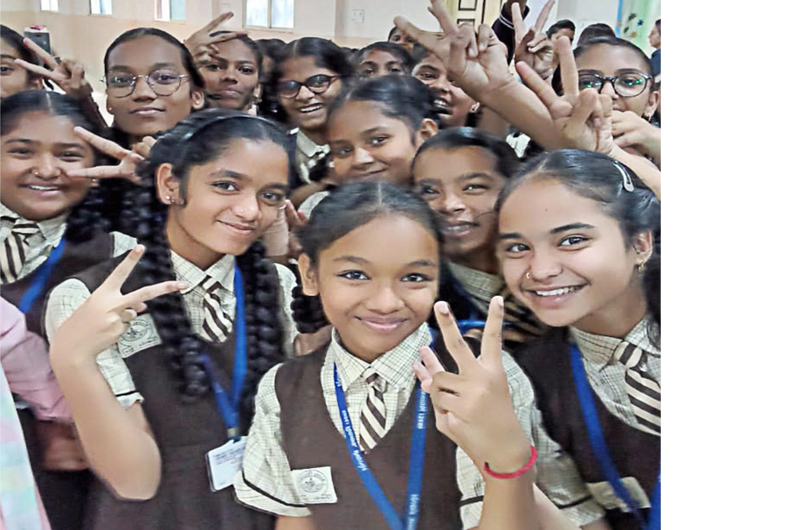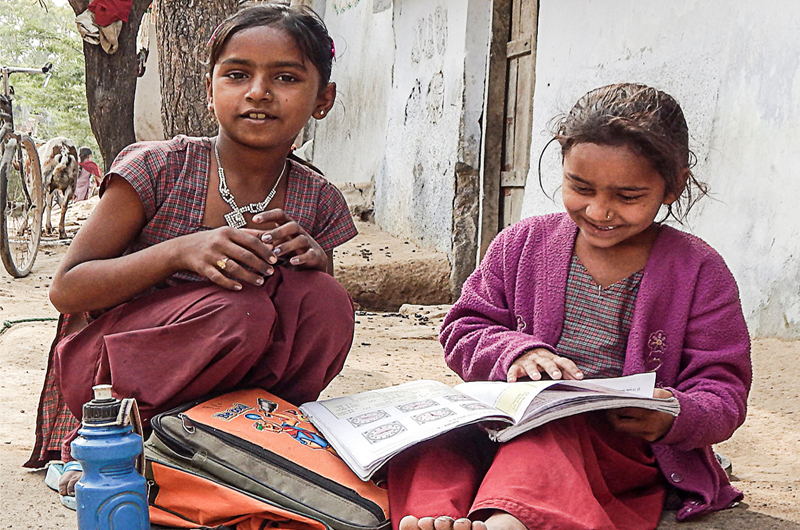CHETNA (Centre for Health Education Training and Nutrition Awareness) based in Ahmedabad is one of India’s pioneering as well as leading NGOs working on women and girl’s empowerment, health and nutrition issues. On turning 40 last August, it showed to the world through a coffee table book, CHETNA@40 – Nurturing Dreams, Empowering Destinies, its struggles and achievements and the ongoing impact of its work. CHETNA was set up by three young women fresh out of college, two as nutritionists and one eager to work as a child educator – Indu Capoor, Pallavi Patel and Minaxi Shukla – and was an endeavour of the Nehru Foundation for Development. For the three women, it was ground-breaking work from the grassroots. Usha Rai narrates three of the stories featured in the book that won CHETNA kudos. Here is the first one
In 2005-2006, the small Barot Community in Village Ghogha in District Mehsana, Gujarat, was confronted with a complex problem. About 25 to 30 of its men of 35 to 40 years could not find brides from their community. The sociological crisis arose due to a decline in the birth of girls. But it was not the only village facing a shortage of brides. With a drastic fall in the child sex ratio in Gujarat from 928 girls in 1991 to 883 per 1000 boys (2001 Census), many other districts were facing similar issues. But what was of particular concern was that Mehsana, one of the prosperous districts in Gujarat, had the lowest child sex ratio of 801 per 1000 boys in the state (2001 Census).
Why was the girl child so unwanted? Was the Pre Conception and Pre Natal Diagnostic Technique (Control and Regulation) Act (PC & PNDT) brought in to stop sex selection an effective legislation to change social norms and desire for sons? These were the questions that led CHETNA to launch its initiative in 2008 to improve the skewed child sex ratio in 12 villages in Kadi, Unjha and Satlasana Blocks of Mehsana District.
Collective efforts show impact
Over the following 12 months, their wide-ranging intervention to enhance awareness about implications of declining of child sex ratio and their role in creating an enabling environment for the girl child synergised the collective efforts of all stakeholders. These included caste panchayat leaders, government functionaries and frontline health workers, political leaders, youth, NGOs and the media. The engagement would contribute to improvement in the sex ratio at birth from 806 in 2005 to 899 per 1000 in 2008 in Mehsana District (CRS 2008-2009).
Understanding the problem
Minaxi Shukla, former additional director, CHETNA, says “while conversing with girls they expressed concern about bringing girls into a world they perceived as unsafe and burdened by the financial strain of dowry. Convincing them was difficult but we achieved a breakthrough when religious and motivational leaders, as well as marriage officials (pandits) stepped forward. They played a crucial role by integrating discussions about girl child issues into their sermons and ceremonies. Some pandits even encouraged couples to take oaths against sex selection. This multi-pronged approach proved effective, and we left no stone unturned in our efforts.”
Ila Vakaria, a former senior programme officer said: “When I started working on child sex ratio and the importance of the girl child, I encountered various challenges. It was a mammoth task. The preference for a male child was so strong that awareness campaigns and counselling did not yield positive results. I soon realised there was a strong network within the community among families interested in sex selection. Hidden communication channels existed between the community and healthcare providers, supported by a group of middle-men and women facilitating this illegal activity. It was surprising that no legal actions were taken to stop such activities. I realised it was not just a social issue but a much larger problem involving substantial amounts of money.”
To be able design an appropriate intervention, CHETNA first did an exploratory study with 359 women having children up to three years of age. The study helped to shape and develop the intervention. Here were some of the key learnings:
- 37 per cent mentioned that girls were unwanted due to dowry and lack of safety
- 24 women had opted for sex selection as they already had one (or more) daughter/s
- 19 per cent families accepted they had faced difficulty in getting brides in their own caste.
- More than 50 per cent women were aware about the sex determination test

Unjha and Satlasana Blocks of Mehsana District. Innovative, multipronged and committed efforts showed it was possible
to impact the lives of girls in a meaningful way.
Mobilising agents of change
Based on the information gathered, it became clear that a determined effort by all stakeholders was critical to change social norms. So, community-based organisations and caste leaders were mobilised to address the problem of low number of girls in the more affluent and educated Patel and Chaudhary Communities. About 5000 adolescents and youth from networks like Nehru Yuva Kendra, National Service Scheme, National Cadet Corps and academic institutions were encouraged to orient their peers, families and communities to change their mindset towards the girl child and promote gender equality.
Elected representatives including MLAs, MPs and panchayat leaders in Gujarat were sensitised and persuaded to come on board. A special session was held under the chairpersonship of the speaker of the Gujarat Legislative Assembly. The health minister promised strict enforcement of the PC & PNDT Act and called for support in its enforcement. Panchayat members were mobilised through Save the Girl Child campaigns to review the number of girls in their respective villages and develop action plans.
The media, too, was made an active partner of the intervention. Press conferences and media workshops for print and electronic media at the district and block level facilitated better understanding and coverage of the skewed child sex ratio. CHETNA developed a website in Gujarati to promote the value of the girl child. Various reports of workshops/seminars, communication materials, list of NGOs working on the girl child in Gujarat were showcased on the website.
Innovative advocacy brings results
The improvement in the sex ratio at birth from 806 in 2005 to 855 per 1000 in 2008 in Mehsana District (CRS 2008-2009) would not have been possible without the initiatives taken by all the stakeholders and their collective work. Whether it was conducting a census of girls in caste groups, creation of a fund for education of girls, pledges taken by newly married couples and others to value the girl child and stop sex selection, campaigns and action plans launched by elected representatives and state health department or the plethora of stories in the print and electronic media, the innovative, multipronged and committed efforts showed it was possible to impact the lives of girls in a meaningful way.
Here were some impactful initiatives:
- Supporting over 100 stories on skewed child sex ratio and decline in birth of girls by the local, vernacular and electronic media with information and fellowships
- Convincing MLAs of Unjha Block (having lowest child sex ratio) to mobilise more than 50,000 people to take an oath to say no to sex selection
- Persuading a popular temple to print messages to stop sex selection on the prasad (sacred) box distributed to pilgrims
(The writer is a veteran journalist who brought in social issues including women’s issues, environment, education, health and rural development into mainstream media. For four decades, she worked for The Times of India, Indian Express and Hindustan Times, from Delhi, and for a while also worked for the Press Institute of India. She has been associated with CHETNA for many years now.)



 from Webdoux
from Webdoux